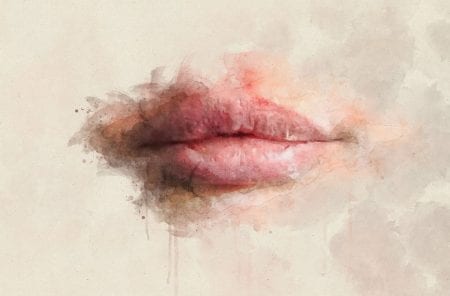 Is a used syringe more dangerous than a poorly washed cup in a restaurant? And what skin diseases are actually contagious? As it turned out, we are often mistaken in the safety of everyday things.
Is a used syringe more dangerous than a poorly washed cup in a restaurant? And what skin diseases are actually contagious? As it turned out, we are often mistaken in the safety of everyday things.
Poorly washed cup
Has it ever happened that in a restaurant they brought you a cup with the remnants of someone else’s lipstick? In addition to squeamishness, it can carry many health risks. At the very least, herpes that lives for several days on the surface.
Tip: be sure to ask to change the dishes, and if possible use a disposable one.
Lipstick in a cosmetics store
Before buying cosmetics, the girls want to try – how it looks on their face. But even just by applying a probe to the skin, you can become infected:
- conjunctivitis
- fungal diseases
- acne
Tip: When testing cosmetics, use wipes.
Used syringe
You can really get an infection if you inject yourself with a syringe previously used by an HIV-infected person. However, this is probably extremely small – from 0.03 to 0.3%. In the syringe and needle, HIV can persist from 30 minutes to 48 hours. Rather, you can get Hepatitis B – he lives up to three months.
Tip: If you still injected, disinfect this place and immediately contact an infectious disease specialist.
Slippers
Measured shoes in a store without socks and boldly put on slippers at a party? Such carelessness can bring foot mycosis.
Tip: Do not wear other people’s shoes, including slippers, on your bare foot. Try to measure shoes by wearing socks.
A cap
We rarely think about the dangers of hats. However, by measuring a hat or cap, you risk becoming infected – with pediculosis or even deprivation.
Tip: measure hats, after putting on a disposable hat.
Glasses
It would seem that just points can bring in themselves. But they are not so harmless, because they can become a cause – conjunctivitis or keratitis.
Tip: Wipe with an alcohol cloth before trying on.
Antique books
In old books, there is a lot – bloom, dust and pathogens of the respiratory tract. Be careful when buying antiques in the markets, because it is not known in what conditions they were stored.
Tip: work with old books in libraries and use gloves. If you purchased an antique volume, keep it in a separate room.
Money
Different microorganisms that cause more than 200 types of diseases can live on banknotes!
Tip: so as not to get infected thoroughly my hands after touching the bills.
What skin diseases are really contagious?
Psoriasis is not contagious
Psoriasis is an autoimmune disease that cannot be transmitted through domestic or sexual transmission. Therefore, you can safely cuddle with a person who has this disease.
Vitiligo is not contagious
Vitiligo is a violation of skin pigmentation. It is also not transmitted through sexual, contact-household, airborne droplets. Vitiligo is not an infectious disease! Due to ignorance of others, people with vitiligo experience loneliness and discomfort.
Eczema is not contagious
Eczema is a chronic skin disease, it has an allergic nature. Sometimes people just have a genetic predisposition to this disease. However, it is not transmitted by contact and is safe for others.
Human Papillomavirus is contagious
The human papillomavirus can live in the body from birth. It is transmitted through contact, sexual contact and the use of common household items.
Herpetic infection is contagious
Herpes simplex virus infected more than 90% of the world’s population. It nests in nerve cells, in the ridge, and does not lend itself to complete destruction. The infection is activated when the immune system is weakened.
Lice are contagious
The main way to transfer lice, that is, lice, from one head to another. Lice can crawl only in close contact with humans.
Picture Credit: Pixabay
